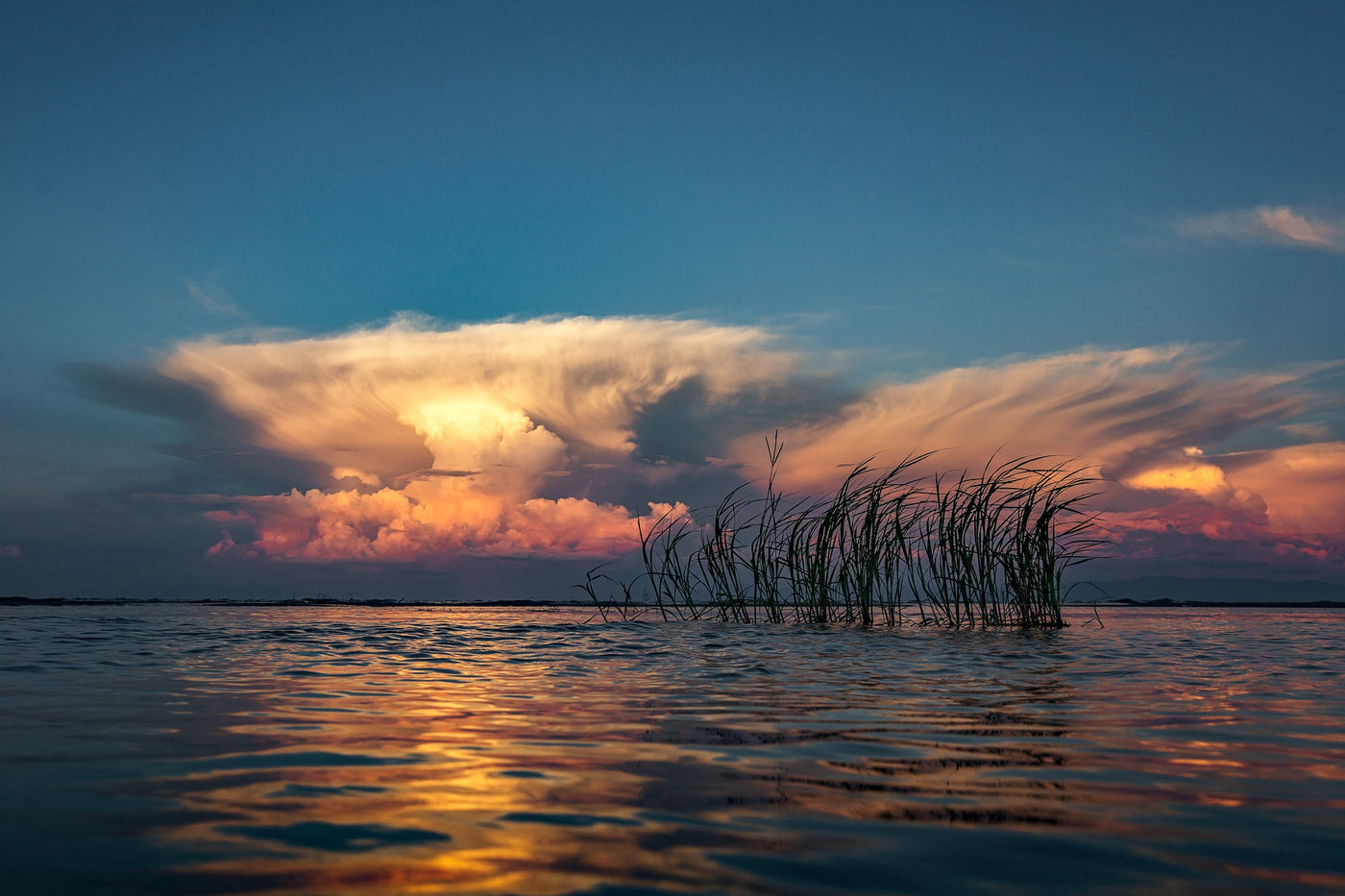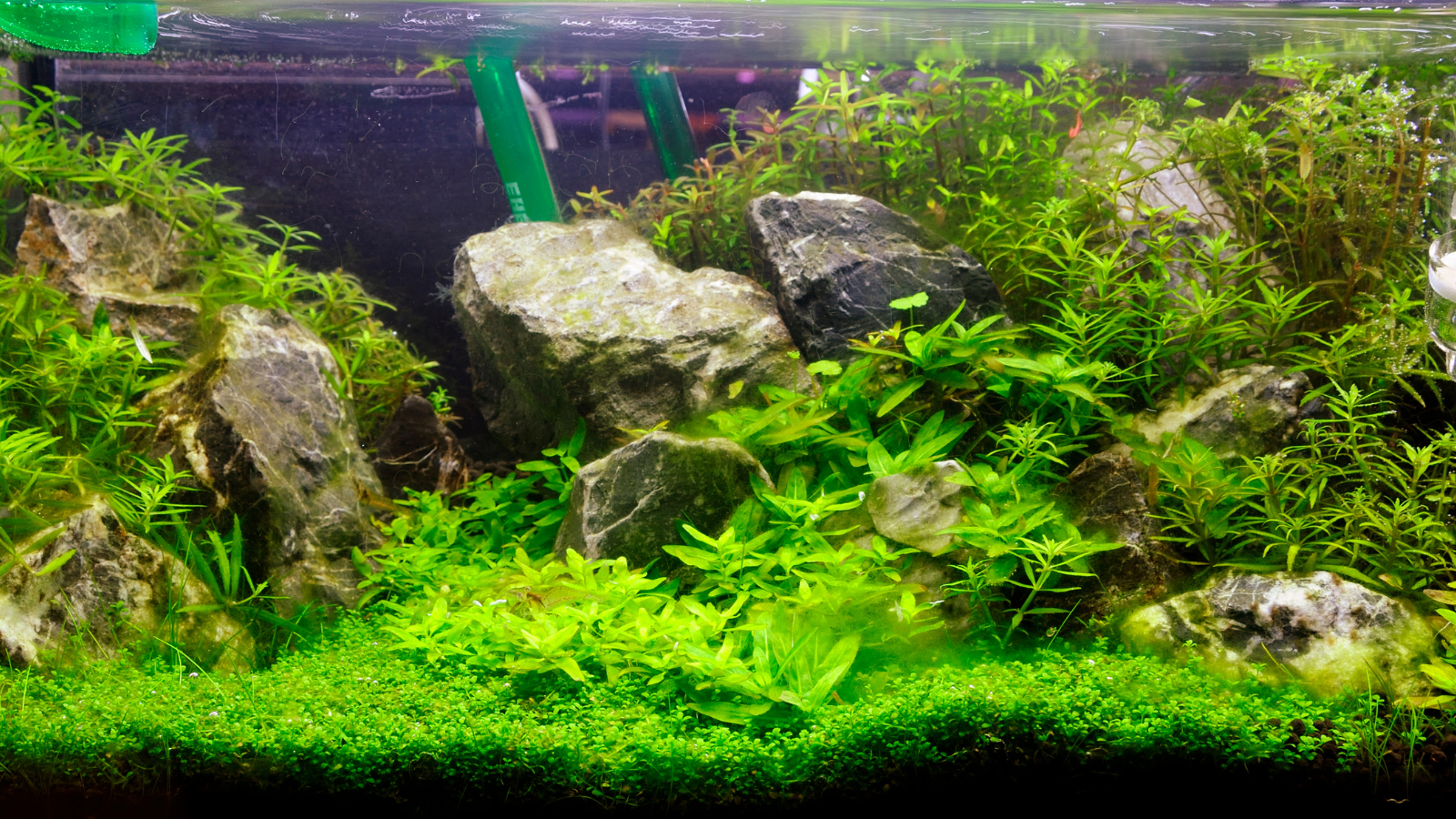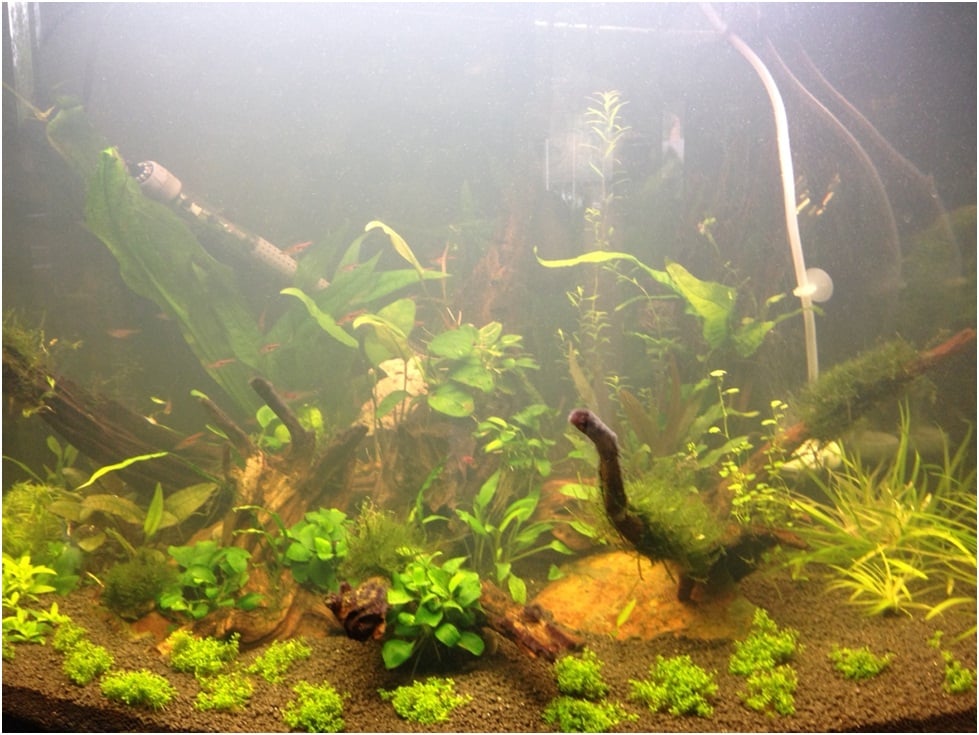
African Biotopes- amazing underwater world on the hottest continent
Biotope aquarium- reflection of the natural environment caught in the fish tank. That’s a maximal short definition of this term. Today let’s get closer to African biotopes which have been gaining in popularity in recent years.
There is a common myth that biotope aquaria are reserved only for experienced aquarists. That's not truth! In our opinion this specific natural setting is a set up which all aquarists should try because it may turn out that it's your cup of tea! Among numerous biotopes we decided to show you today how you can set up your own African river or African lake biotope aquarium!
Firstly, let’s see some facts about Africa’s nature.
Africa is located almost symmetrically on both sides of the equator. It is a compact continent with a poorly developed coastline, the second largest area and a huge latitudinal extent.
The topography of the continent is dominated by highlands, which make up 2/3 of the continent, separated by valleys. The eastern part of Africa is separated from the rest by faults limiting huge tectonic ditches, the bottom of which is filled with the waters of the lakes. The highest point of Africa is the Kibo peak in the Kilimanjaro Massif (5,895 m above sea level), and the lowest - Lake Assal in the Danakil Basin (173 m above sea level). Africa is located in zones of hot and locally temperate climates. The location on both sides of the equator means that theoretically the north and south have the same climate. However, the greater distance from the sea in the northern part creates a continental climate inside the Sahara. Due to the dense coastline, sea currents have a great influence on the climate.
Of course we want to talk about aquascaping so let me go directly to the underwater world. Firstly, be aware that the occurrence of surface waters in Africa is closely related to the climatic zoning.
RIVERS
There are generally three types of rivers in Africa:
-Permanent rivers - these are rivers with a constant, high water level, occurring or, as in the case of the Nile, having their sources in the humid equatorial zone. Examples of such rivers, apart from the Nile, are the Congo, the Oranje and the Zambezi and other African rivers. These rivers usually have wide beds and a fairly rapid water current, often piled up with numerous waterfalls. There are many species of fish, including upside down catfish and various cichlids. The longest river in the world which is also the largest river system in Africa - the Nile, which runs through all climatic and landscape zones in Africa, deserves a more detailed description, therefore its physical and chemical parameters, and thus also its fauna and flora, change in different sections. The biotope of the Nile near Lake Victoria looks completely different from the muddy waters in the river delta that have been heavily transformed by humans.
-Seasonal rivers - these are the rivers of the savannah which flow in full water current in the rainy season, while in the dry season they dry up completely or almost completely. Water parameters change from a swift current to a partially dry canal, often from high salinity. They are mainly inhabited by fish from the carp family. An example of a periodic river is Bahr al-Arab and Azaauak.
-Episodic rivers - occurring in deserts. Their troughs (wadis) only fill with water when it rains heavily. Sometimes they soak into the sand within a few hours. Episodic rivers are the Saaura and the Irawan.
Aquarists especially beloved two of the biotopes of African river:
- The Congo River Biotope
- The Biotope of periodic rivers
Let’s start with the first one- The Congo River Biotope
A biotope coming from the Central Africa characterized by a fairly strong water current and modest plant arrangement.
Sand and pieces of rock should be used as the substrate.
The parameters of the water are: Ph 7.0-7.8, temperature 24-27 Celsius degrees.
Plants: crinum and anubias
Fish species: Congo tetras, cichlids, Synodontis. Don't introduce other tank mates which may eat small tetras.
Pieces of rock (also large plates imitating waterfalls) and pieces of wood can be used for the arrangement. The key element of the arrangement in this biotope aquarium is the constant movement of water and the water should be well aerated.
The Biotope of periodic rivers
The best representation of this biotope should direct aquarists towards the paludarium, because the most natural look would be complemented with swamp plants. The impression of a drying up river can also be achieved by the rich arrangement of the water section.
The substrate may be gravel of various thickness, even fine gravel will do.
Water parameters: Ph 5.5-7, water temperature 24-28 degrees Celsius.
Plants: plants from genus pistia, anubias, water hyacinth
Fish species: Redtail notho, banded panchax should be suitable tankmates
The arrangement may be large pieces of wood protruding above the water surface, stones and lignites which will be the hiding places. The flora should be dense and as varied as possible. Floating plants make the great misterious effect.
LAKES AND STANDING WATERS
Africa does not have a special multitude of lakes, but the ones that do occur are extremely interesting because of the endemic species inhabiting them. Particularly interesting are the rift African Great Lakes (Lake Victoria, Lake Albert, Lake Edward, Tanganyika, Malawi), which fill the tectonic depressions of the Great African Rifts. These lakes are characterized by clear waters of great depth and a rocky bottom full of grottos and rock debris. In fact, each of the lakes is a separate biotope with species of flora and fauna that are typical only for them. Lake Chad, a drainless lake that is partially dry in the dry season, also deserves a mention. The lake has shallow and warm waters and muddy shores covered with swamp vegetation. There are endemic species, e.g. a common West African lungfish.
Although Africa is associated more with a lack of water, one of the typical landscapes of the continent is vast swamps, created by the seasonal flooding of rivers. The most famous are the swamps in the Okavango delta.
Among the above mentioned lakes and standing waters, the biotopes we can meet the most often in tanks are The Malawi, Tanganyika and Wiktoria Lakes Biotopes.
The Malawi Lake Biotope
A biotope that delights with the raw beauty of the rocks, which are the background for a variety of colorful fish.
The substrate should be sand or gravel.
Water parameters: pH between 7.7 and 8.8, water temperature 24-29 Celsius degrees.
Plants: algae (which is a natural food for mouthbrooders), single anubias or vallisneria
Fish: different varieties of the Malawi cichlids
The arrangement should be based mainly (or only) on rocks and stones, as it is supposed to imitate rock debris. If someone cares about plants - rather single pieces between the rocks.
It is good to use spot lighting that will enhance the amazing effect.
The Victoria Lake Biotope
Substrate: sand
Water parameters: Ph 7.1-9.0, temperature 26-34 degrees Celsius, clear water
Plants: plants suitable for this biotope can be vallisneria, anubias
Fish: some varieties of mouthbrood and cichlids
Rocks, stones can be used as an arrangement, the roots look good as if they "enter" the aquarium from above.
Lighting not too sharp.
The Tanganyika Lake Biotope
A biotope with a large variety of fish and rock decorations.
Sand and small stones can be used as a substrate.
Water parameters: pH between 7.6 and 9.2, water temperature 24-29 degrees Celsius, clear water.
Plants: vallisneria, watermilfoils
Fish: species found in this biotope are Julidochromis dickfeldi, cichlids, tropheus
Large rocks (especially sandstones and limestones), stones, and empty shells can be used for the arrangement. Plants should not be too dense.
The lighting should not be too intense, spotlighting looks good.
If you’re deciding to set up African biotope aquarium, be aware that different rocks and stones have an impact on the water chemistry. For fish living in deep African lakes rich in such rocks, pH is higher than in case of other freshwater species which should also be considered when choosing the stocking. It's worth buying wood, rocks and stones that are available in aquarium trade. Of course the amount of fish introduced to the aquarium should also meet their space requirements. Overstocking may lead to serious problems for the whole aquarium ecosystem and rescuing such an environment from the catastrophe is the last thing any hobbyist wants. Moreover, if you thought of adding species that are not on the list, remember that they should have similar water requirements which is particularly important in terms of biotope aquaria.


